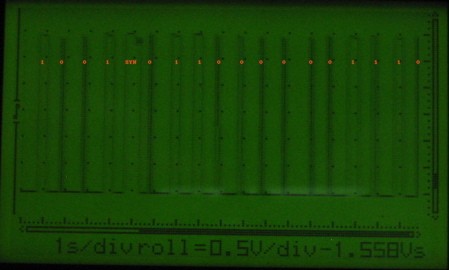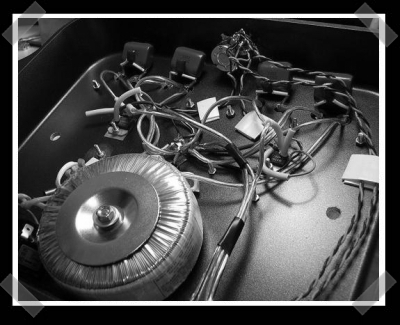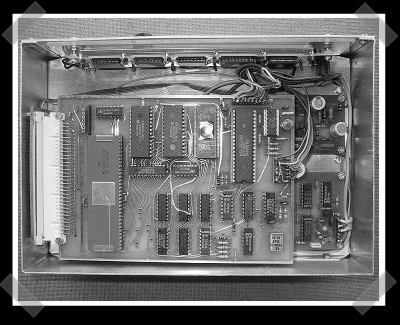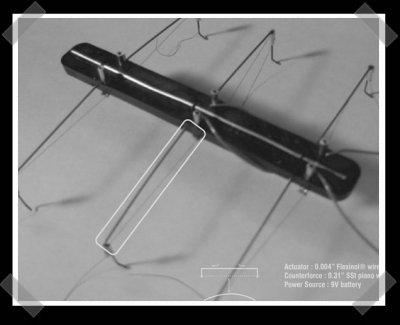
[Dan Kaminsky]’s much anticipated talk on his DNS findings finally happened at Black Hat 2008 in Las Vegas today. [Dan] has already uploaded the complete slides from his talk as well as posted a short summary to his site. New information in the slides since our previous coverage includes “Forgot My Password” attacks and new attacks on internal network vulnerabilities as a side of effect of DNS cache poisoning. [Dan]’s talk today was over capacity; our shot of the conference room overflow is shown above.
Author: fabienneserriere29 Articles
Scavenging A WWVB Module From An RC Clock

[Chris Kuethe] shows how to scavenge what could be a pricey WWVB module from a radio controlled clock. WWVB is a special radio station in Colorado that transmits an atomic-clock-derived signal to RC clocks. The clock model he uses, the Atomix 13131, goes for less than twenty bucks. He also shares the link to another tear down of a Sony branded radio controlled clock for similar purposes. So if you’re looking for a cheap way to obtain a WWVB module, the scavenging method could be the thrifty solution you seek.
(Disclaimer: A sticker for an event I organize is in the background of the photos, it’s not meant to be there as product placement.)
RFID Reader Denial Of Service
While in Vancouver, Canada for CanSecWest we had a chance to catch up with [Marc]. He showed off a very simple Denial-of-Service attack that works for most commercial RFID reader systems. He worked out this physical DoS with [Adam Laurie], whose RFID work we featured last year.
Roasting Pan Audio Amplifier

When you need a rigid, vibration-free chassis for your amplifier, look no further than a roasting pan. I’ve used cast cement for subwoofers, but using a cooking pan bolted to a heavy wooden chopping board is a cheap way to get a rigid surface on which to build audio gear. The amp circuitry used by [Mark] is not complex, but it gets the job done. The “oxygen free copper cable” and “pure silver wire” are not needed, just make sure you have a solid mechanical connection. In other words, just tin your wires, bend small “u” shapes at each end, hook them together, and apply solder to the heated ends. Alternatively, hold the ends of stranded wires parallel to each other and twist the ends together before tinning, then solder. Test everything with a multimeter while moving wire joints to make sure you have no weak connections. Now you won’t waste your money on hyped-up cabling materials.
Thanks to [Gio] (who seems to have some personal audio projects as well) for the tip.
Build Your Own GPS And GLONASS Receiver

[superlopez] sent in this detailed article (mirrored here and here) which describes how to build a GPS and GLONASS (the Russian version of GPS) receiver. The resulting device is gigantic compared to one of those tiny bluetooth USB GPS units, but the ability to build one’s own receiver is one of those post-apocalyptic skills I sure would like to have. The creator of the article [Matjaz Vidmar] aka [S53MV] also has pages on Packet-Radio (PKT) transceiver improvements (PKT gets my vote for the best post-apocalyptic technology, and the only believable technology featured in the Transformers movie), and a more sophisticated homemade frequency counter than the one featured earlier this summer.
In 2005 we featured a from-scratch GPS receiver as well, thought the project site seems to be down. If your GPS unit just needs a better antenna, check out [Will]’s how-to from last year.
Breathing Walls With Shape Memory Alloy Wire

When you need something quietly bending or moving, don’t underestimate SMA’s (or Shape Memory Alloys). The Living Glass project by architects [David Benjamin] and [Soo-in Yang] catalogs an experiment in building interactive, flexible, “breathing”, walls out of SMA wire and microcontrollers. Although they use Basic Stamps, the project could easily be extended to more cost-effective microcontrollers for large surfaces. The project is well documented with videos (AVI) of each prototyping step and even includes the ideas that were ultimately scrapped. Even if you don’t build a wall of interactive gills, this project should give you plenty of ideas for uses of SMA wire embedded in semi-flexible materials.
Interactive Textile Construction

The e-textile construction kit by [Leah Buechley] consists of stitch-able sensors and microcontrollers. Stitch-able refers to the fact that these parts can be sewn with a needle and thread into wearable clothing or other fabric-based housings. A paper (PDF) on the e-textile construction kit project contains the first version. The second version of the e-textile construction kit, the LilyPad Arduino, is available this month through SparkFun’s site. Especially interesting are her instructions for modifying the clock speed on the Arduino to make it suitable for battery powered wearables.
We’ve covered [Leah Buechley]’s work twice in 2005 for her wearable led matrix work.
Update: [Leah] updated her site since we posted this and added this new how-to.











